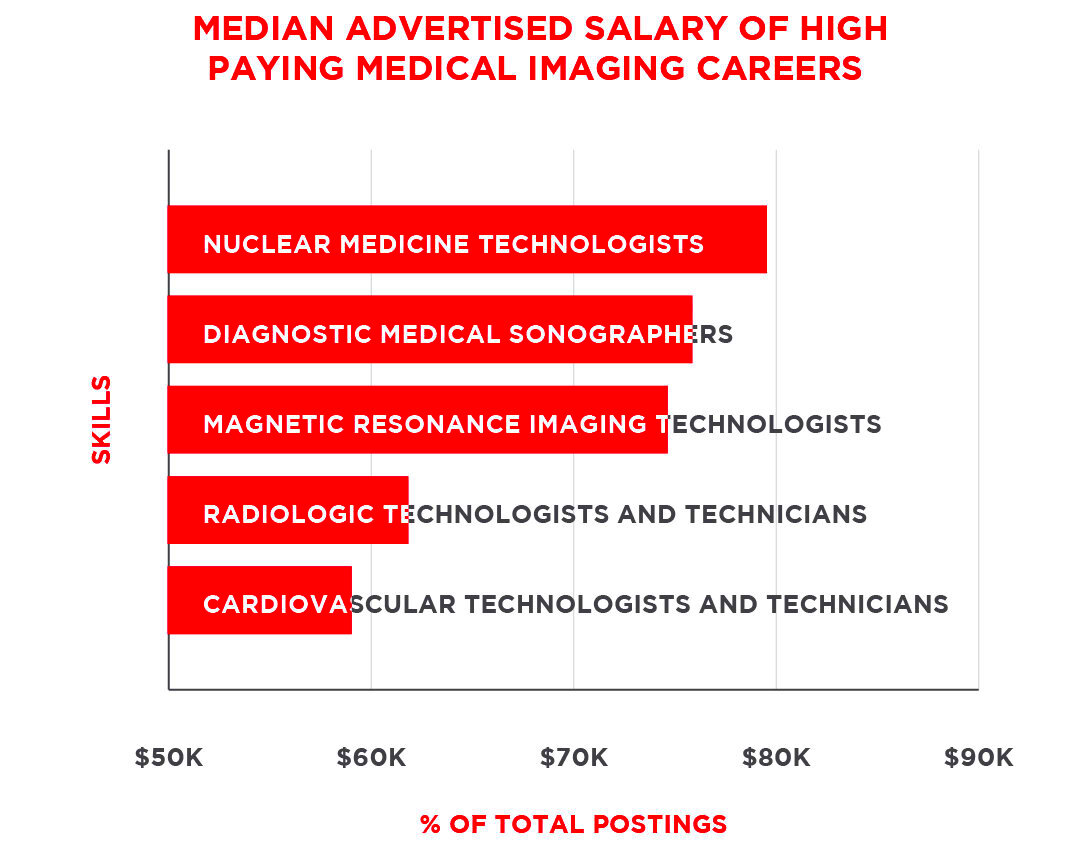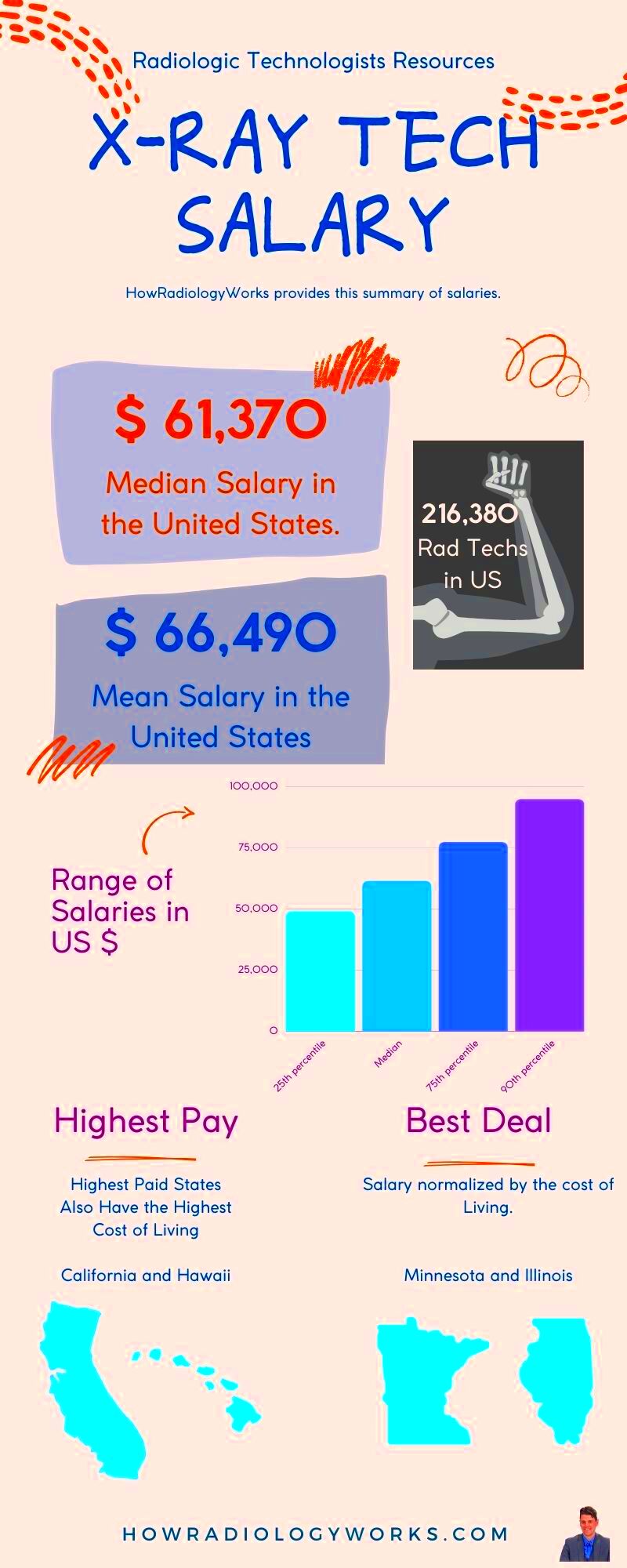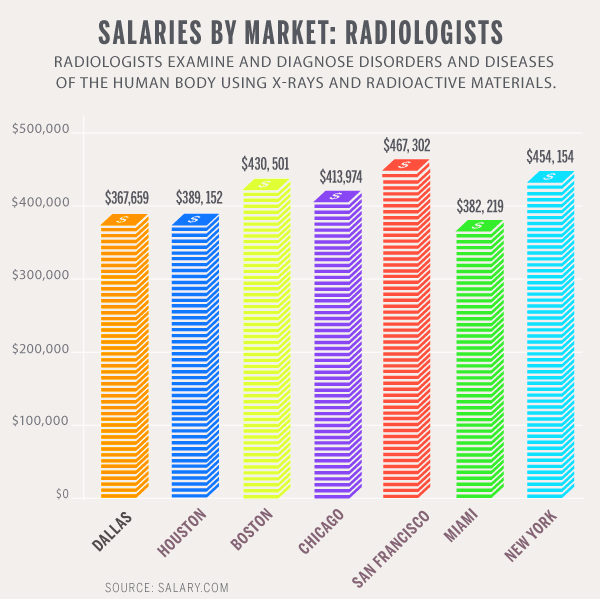Imaging centers are medical facilities that specialize in diagnostic imaging. These centers use advanced technology to capture detailed images of the inside of the body, helping doctors diagnose various health conditions. They play a vital role in modern healthcare, offering non-invasive methods for identifying issues such as fractures, tumors, or soft tissue problems.
Imaging centers are often standalone businesses or part of larger healthcare facilities like hospitals and clinics. They serve a wide range of patients, from those seeking routine health checkups to individuals with specific medical concerns. Thanks to advancements in medical imaging technology, these centers have become an essential part of healthcare, helping doctors make accurate diagnoses and develop effective treatment plans.
What Services Do Imaging Centers Offer?

Imaging centers provide a range of diagnostic services, each using different types of equipment to capture images of the body. Here are some common services offered:
- X-ray: One of the most basic forms of imaging, X-rays are used to examine bones and detect fractures, infections, or other abnormalities.
- CT scans: Computed Tomography (CT) scans provide more detailed images than regular X-rays, making them ideal for looking at internal organs, blood vessels, and tissues.
- MRI scans: Magnetic Resonance Imaging (MRI) uses strong magnetic fields and radio waves to create detailed images of soft tissues, such as the brain, muscles, and organs.
- Ultrasound: Ultrasound imaging uses sound waves to create images of organs and tissues. It is commonly used in prenatal care, as well as for examining organs like the heart and kidneys.
- Fluoroscopy: This technique provides real-time moving images of the body, often used for guiding procedures such as catheter placements or examining the digestive system.
Each of these imaging services is critical in diagnosing health issues and determining the best course of action for treatment. Imaging centers often have highly trained technicians and radiologists to handle the equipment and interpret the results accurately.
Factors That Influence the Earnings of Imaging Centers

The earnings of imaging centers can vary widely depending on several factors. While these centers provide essential services, their financial success is influenced by a variety of elements, from location to the technology they use. Let’s break down the main factors that impact earnings:
- Location: The geographic location of an imaging center plays a significant role in determining its profitability. Centers located in urban areas with high patient populations tend to have higher demand, leading to more procedures and higher earnings. In contrast, rural areas may have fewer patients and a lower volume of services.
- Technology: The type and quality of equipment used at an imaging center can influence its earnings. Centers that invest in the latest technology, such as advanced MRI machines or high-resolution CT scanners, can offer more specialized services and attract patients willing to pay for high-quality imaging.
- Insurance Reimbursement Rates: The types of insurance accepted and the reimbursement rates for services are key factors. Centers that work with a wide range of insurance providers, including government programs like Medicare, may see consistent revenue, but low reimbursement rates can impact profitability.
- Service Variety: Imaging centers that offer a broader range of diagnostic services, such as MRI, CT scans, ultrasounds, and X-rays, are likely to attract a wider pool of patients. Offering specialized services, like cardiac imaging or advanced neurological scans, can also boost earnings.
- Patient Volume: The number of patients an imaging center sees in a given period is one of the most straightforward factors influencing earnings. Higher patient volume generally leads to higher earnings, provided the center can maintain quality and efficiency.
- Operational Costs: The cost of running an imaging center—including staffing, equipment maintenance, facility rent, and insurance—also plays a critical role in profitability. Centers that manage their operational costs effectively are more likely to earn higher profits.
In short, imaging centers that combine high-quality services with efficient operations and strategic planning are more likely to see substantial earnings. The key to success is balancing technology investment, patient care, and cost management.
The Role of Technology in Increasing Earnings
Technology plays a crucial role in the success and profitability of imaging centers. By adopting the latest advancements in medical imaging, these centers can not only improve the quality of their services but also increase their earnings. The better the technology, the more accurate and faster the results, which often leads to higher patient satisfaction and a higher volume of patients.
Here are a few ways technology impacts earnings in imaging centers:
- Higher Accuracy and Faster Diagnoses: With advanced machines, such as high-resolution MRIs or faster CT scanners, imaging centers can offer more accurate results in less time. This attracts more referrals from healthcare providers and increases the number of procedures they can perform in a day.
- Specialized Services: Centers that invest in cutting-edge technologies often offer specialized imaging services, such as 3D mammography, cardiac imaging, or functional MRI. These advanced services can command higher prices and appeal to patients seeking expert care.
- Patient Convenience: Some newer technologies reduce the need for patients to stay in the machine for extended periods or even make certain procedures less invasive. This improves patient comfort, which can boost the center’s reputation and lead to more repeat customers.
- Operational Efficiency: Technology like automated scheduling and advanced billing systems can streamline operations, reduce overhead costs, and improve revenue flow.
By investing in these technologies, imaging centers not only provide better services but also enhance their potential to earn higher revenues. Patients are willing to pay more for advanced services, making technology a key driver of profitability.
How Insurance Affects Earnings in Imaging Centers
Insurance reimbursement is one of the most important factors influencing the earnings of imaging centers. Since the majority of patients rely on insurance to pay for imaging services, the types of insurance accepted and the rates at which they reimburse can significantly affect the center’s bottom line.
Here’s a breakdown of how insurance affects the earnings of imaging centers:
- Insurance Reimbursement Rates: Different insurance providers have varying reimbursement rates for imaging services. Government programs like Medicare often pay less than private insurance companies, which can limit the profitability of imaging centers that serve a large number of senior patients or those relying on public health programs.
- Insurance Coverage and Patient Volume: Imaging centers that accept a wide range of insurance plans can attract a larger number of patients. Centers that only accept a limited number of insurance providers may face lower patient volumes, which can impact their overall revenue.
- Out-of-Pocket Costs: When patients are required to pay part of the cost out-of-pocket, it can affect the number of procedures they choose to undergo. Centers may see fewer patients for non-urgent imaging procedures if high deductibles or co-pays discourage them from seeking care.
- Insurance Negotiations: Imaging centers often negotiate with insurance companies to set rates for various services. Centers with strong negotiation skills can secure higher reimbursement rates, which can lead to increased earnings.
Ultimately, the type of insurance accepted, reimbursement rates, and patient coverage can all impact how much an imaging center earns. A center with favorable insurance contracts and a high volume of insured patients is more likely to be profitable.
Average Earnings of Imaging Centers
Determining the average earnings of imaging centers can be tricky, as it varies widely depending on factors such as location, size, services offered, and patient volume. However, it’s possible to provide a general idea of what imaging centers typically earn based on industry trends.
The average earnings of imaging centers are influenced by several factors, including the types of services offered and the number of patients treated each day. Here’s an overview:
- Revenue Per Procedure: Imaging centers usually charge per procedure, with costs varying depending on the type of imaging. For instance, a simple X-ray may cost a few hundred dollars, while an MRI or CT scan could cost over a thousand dollars.
- Annual Earnings: Small imaging centers may earn anywhere from $500,000 to $2 million per year, depending on their location and services. Larger centers in metropolitan areas can earn significantly more, with annual revenues reaching $10 million or more.
- Profit Margins: Profit margins in imaging centers can be relatively high, with some centers achieving margins of 20% or more. However, this depends on factors like overhead costs, patient volume, and reimbursement rates from insurance companies.
- Location and Size: Imaging centers in urban areas with large populations generally have higher earning potential due to greater demand for services. Smaller rural centers may have lower earnings but can still remain profitable if they manage costs effectively.
Despite these variations, imaging centers that offer a broad range of services and have efficient operations can expect to see healthy earnings. However, they must also manage their operational costs and patient volume to maximize profitability.
Challenges Faced by Imaging Centers in Increasing Earnings
While imaging centers can be profitable, they also face several challenges that can make increasing earnings difficult. These challenges range from high operating costs to intense competition, which can affect the bottom line. Understanding these obstacles is crucial for centers aiming to improve their financial performance.
Here are some of the main challenges imaging centers face:
- High Operating Costs: The cost of maintaining and upgrading expensive equipment, like MRI machines and CT scanners, is one of the biggest financial challenges for imaging centers. These machines require regular maintenance, and replacing old equipment can be costly.
- Insurance Reimbursement Issues: Imaging centers often struggle with low reimbursement rates from insurance companies, especially government programs like Medicare and Medicaid. These rates may not fully cover the costs of the procedures, leaving centers with a gap in revenue.
- Patient Volume Fluctuations: Imaging centers depend on a steady flow of patients. However, fluctuations in patient volume—due to seasonality, competition, or changes in healthcare trends—can lead to financial instability. Centers must find ways to maintain consistent patient numbers throughout the year.
- Competition from Larger Healthcare Networks: Larger hospital systems and health networks often have more resources and a broader reach, making it harder for independent imaging centers to compete. These larger systems can offer lower prices and attract more patients, putting pressure on smaller centers.
- Regulatory Compliance and Accreditation: Imaging centers must comply with strict healthcare regulations and accreditation standards. Meeting these requirements can be time-consuming and costly, especially for smaller centers that may not have the same resources as larger facilities.
While these challenges can make it harder to increase earnings, imaging centers that adapt to changing healthcare trends, optimize their operations, and manage their costs effectively are more likely to thrive despite these obstacles.
Future Outlook for Imaging Centers' Earnings
The future outlook for imaging centers’ earnings looks promising, though it will depend on how centers navigate the evolving healthcare landscape. With advancements in technology and the growing demand for diagnostic imaging, many centers have the potential to increase their earnings. However, certain factors will influence the overall industry growth.
Here are some trends and factors that will likely shape the future of imaging centers' earnings:
- Technological Advancements: As imaging technology continues to improve, imaging centers that invest in cutting-edge equipment like AI-powered imaging tools, high-resolution MRIs, and 3D imaging will have a competitive edge. These technologies can improve diagnostic accuracy and reduce procedure times, making them attractive to patients and physicians alike.
- Telemedicine and Remote Diagnostics: With the rise of telemedicine, there’s an increasing demand for remote diagnostic services. Imaging centers may expand their offerings by enabling remote consultations with radiologists, broadening their patient base and revenue potential.
- Increased Demand for Preventive Healthcare: As more people become proactive about their health, there’s an expected rise in demand for diagnostic imaging services, particularly for routine screenings like mammograms and MRIs. Imaging centers could see a boost in business from preventive care initiatives.
- Value-Based Healthcare Models: The shift from fee-for-service models to value-based care could also influence imaging centers. Under value-based care, healthcare providers are paid based on patient outcomes rather than the number of services rendered. Imaging centers that demonstrate the effectiveness of their services in improving patient outcomes will likely thrive under these models.
- Regulatory Changes: Changes in healthcare regulations, including reimbursement rates and compliance requirements, will continue to affect the earnings of imaging centers. Centers that stay ahead of regulatory changes and adapt quickly will be better positioned for financial success.
While there are many uncertainties, the demand for high-quality diagnostic imaging is unlikely to decrease. Centers that embrace technological innovations, adjust to changing market demands, and manage costs efficiently can expect a positive outlook for their earnings in the coming years.
FAQ
Here are some frequently asked questions (FAQs) about the earnings of imaging centers:
- How much do imaging centers typically earn?
Imaging centers can earn anywhere from a few hundred thousand to several million dollars annually, depending on their size, location, and range of services offered. Larger centers in urban areas generally generate more revenue due to higher patient volume.
- What factors determine the earnings of an imaging center?
The earnings of an imaging center are influenced by several factors, including location, patient volume, types of services offered, technology used, insurance reimbursement rates, and operational costs.
- How can an imaging center increase its earnings?
To increase earnings, imaging centers can invest in advanced technologies, expand their service offerings, improve patient retention, and negotiate better reimbursement rates with insurance providers. Additionally, improving operational efficiency and reducing costs can contribute to higher profits.
- What challenges do imaging centers face in increasing their earnings?
Imaging centers face challenges like high operational costs, fluctuating patient volume, low reimbursement rates from insurance, and intense competition from larger healthcare networks. Overcoming these hurdles requires smart financial management and strategic planning.
- What is the future outlook for imaging centers?
The future looks promising for imaging centers, with continued demand for diagnostic imaging services driven by technological advancements and increased focus on preventive care. Centers that adapt to new trends like telemedicine and value-based healthcare will have a strong competitive advantage.
Conclusion: Key Takeaways About Imaging Centers' Earnings
In conclusion, imaging centers are an integral part of the healthcare industry, offering essential diagnostic services that help in the accurate diagnosis and treatment of a wide range of medical conditions. While the earnings of imaging centers can vary greatly depending on factors such as location, technology, and patient volume, they have significant earning potential, especially for centers that optimize their operations and adapt to the latest trends in the healthcare sector.
To succeed financially, imaging centers must focus on offering high-quality services, maintaining modern technology, and navigating the complexities of insurance reimbursement. Additionally, overcoming challenges like high operational costs, intense competition, and regulatory requirements is key to boosting profitability. Centers that invest in innovative technologies, expand their service offerings, and manage costs efficiently are best positioned to thrive in the evolving healthcare landscape.
The future outlook for imaging centers is positive, with increasing demand for diagnostic services driven by advancements in technology, a growing emphasis on preventive care, and the rise of value-based healthcare models. As long as imaging centers can manage the challenges they face and adapt to new opportunities, they can continue to enjoy strong earnings and make a significant impact on patient care.

 admin
admin








